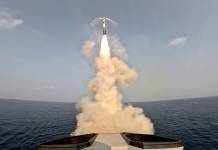Scientists in China have reportedly made breakthroughs in an engineered material that is set to enhance the stealth technology used in fighter jets in possession of the People’s Liberation Army (PLA).
China Looks To Create An Army Of Stealth Fighter Jets With New “Metamaterial” Element
Stealth technology is considered to the most advanced technology used in the modern age of combat fighters like the US F-35 Lightning, F-22 Raptors and Chinese J-20s.
Also termed as low observable technology (LO technology), stealth is a part of the military tactic to make fighter jets, ships, submarines, missiles, satellites, ground vehicles, and even personnel less visible or almost invisible to radar, infrared, sonar, and other detection methods.
While most fighter jets, especially the F-35s and Raptors are designed in a manner in order to reduce their radar cross-section (RCS), which is the electromagnetic signature of the object, the new materials called “Metamaterials” are considered to further reduce radar detection.
According to South China Morning Post, Professor Luo Xiangang and his colleagues at the Chengdu-based Institute of Optics and Electronics, Chinese Academy of Sciences, have created the world’s first-ever mathematical model which precisely describes the behavior of electromagnetic waves when they “strike a piece of metal engraved with microscopic patterns”.
As per a test conducted, the Metamaterials are aimed at making the aircraft, stealthier, lighter and cheaper to build, cut the strength of a reflected radar signal (measured in decibels) by between 10 and nearly 30dB in a frequency range from 0.3 to 40 gigahertz.
Metamaterial is a fabricated layer that comprises microscopic structures similar to integrated circuits and it has the ability to alter the manner in which radio waves bounce off its surface to create a ghost image or minimize echo on the radar.
This helps fighter jets in hiding from other aircraft with great efficiency as they do not register on the enemy radar.
According to Chinese media reports, the Metamaterial was designed and developed by a research team at the State Key Laboratory of Millimetre Waves in Southeast University in Nanjing, Jiangsu province.
According to a researcher at the lab, the Metamaterials were being tested on aircraft at a major military aircraft production base in Shenyang, Liaoning province.

While the researcher has refused to name the test site or the aircraft used for the Metamaterial, there are suggestions that it is indeed the Shenyang Aircraft Corporation, as the Aviation Industry Corporation of China subsidiary builds non-stealth fighter jets, like the J-11 and the J-15.
The materials are not only looked at as enhancing the stealth properties of current fighters but also for making non-stealthy fighters stealthy.
Beijing which has around 20 J-20 stealth fighters and roughly 1,500 other fighters in their ranks will drastically improve upon their aerial prowess in comparison to the United States and Russia if Metamaterials are successful in upgrading their existing non-stealth aircraft.
According to reports, over the past few years, the Chinese government has funded dozens of research teams to develop the technology to hide or make objects disappear from view, however, there have been no public reports on the mass application of the materials.
“This is the beginning. More (applications) are on the way,” said the researcher at the State Key Laboratory of Millimetre Waves.
However, amid China’s claims about the Metamaterials, the stealth enhancing element has been a popular research subject for countries across the world with the US heavily engaged in the research and development of similar technology to cloak military jets.
According to a report in the Financial Times – “Metamaterials first captured the public imagination in 2006, when John Pendry of Imperial College published two papers showing how to create a Harry Potter-style invisibility cloak using the specially engineered materials.”
While the materials hold the key to unlocking the true potential of stealth technology in the future, according to Han Yiping, Director of applied physics at Xidian University, the materials alone could not be able to hide the fighter jets from enemy radar.
“Stealth aircraft relied on a range of tactics, including low-reflection aerodynamic design and cloaks of ionized particles, to fly undetected,” Han said.
Metamaterials were also extremely difficult to mass-produce, and the technology would have to withstand the heat and shock of battle, meaning some performance would have to be sacrificed for reliability,”
And at present, the technology was effective within only certain radio bandwidths.” Han said





